As summer turns to fall in Virginia, a lovely variety of fall-blooming flowers start to appear, adding bright spots of color to gardens and green spaces across the state.
Virginia is slightly warmer than most states along the eastern coast, with areas ranging from USDA Hardiness Zone 5 to USDA Hardiness Zone 8. This mild range of climates allows many types of flowers to flourish. In this article, you’ll discover some of the most colorful fall-blooming flowers that can bring a hint of spring to your autumn garden.
1. Chicory (Cichorium intybus)
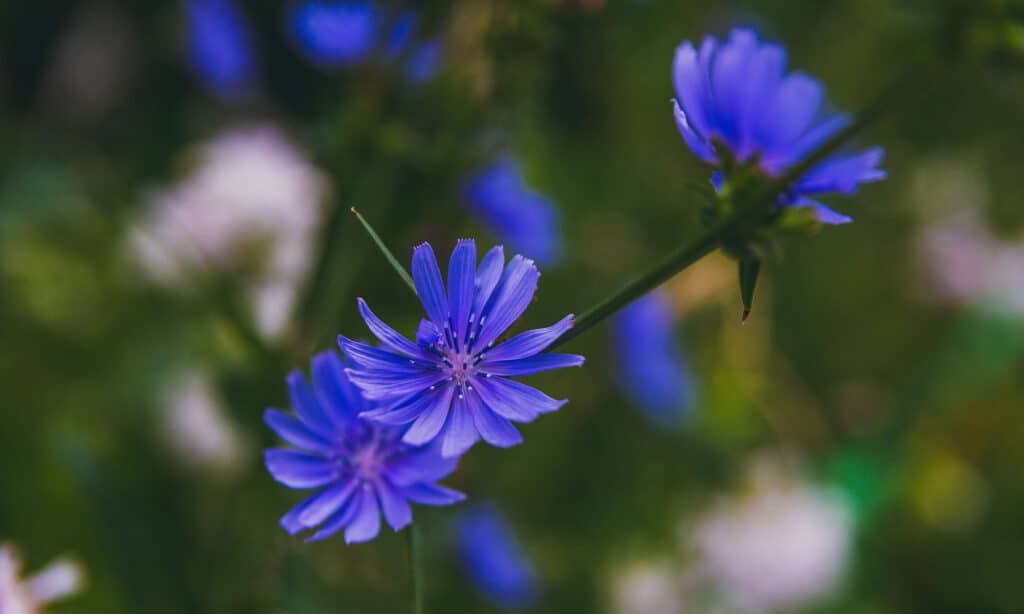
Chicory is one of the most beautiful blue flowers that grows in Virginia.
©marina_eno1/Shutterstock.com
The first fall-blooming flower on the list is chicory, which flourishes in USDA zones 3-8, making Virginia a perfect climate. Chicory is a perennial herb with deep roots and is known for its tall, almost leafless stems that hold a wealth of bright blue flowers, although they can occasionally be pink or white. Spanning an inch in diameter, these blossoms add a splash of color from late spring until autumn.
Chicory has been a popular herb for generations, valued for both its leaves and substantial roots. Chicory flowers have many medicinal uses, such as treating gallstones and stomach problems. You can also turn this plant into a topical ointment for cuts, bruises, and burns. It’s worth noting that this plant tends to spread aggressively, becoming an invasive species in various states across the country.
Plant chicory in a spot that receives ample sunlight and has rich, well-aerated soil with a moderate level of moisture. You have the option to sow it during spring or in the late summer to early autumn period.
2. Blue Mistflower (Conoclinium coelestinum)
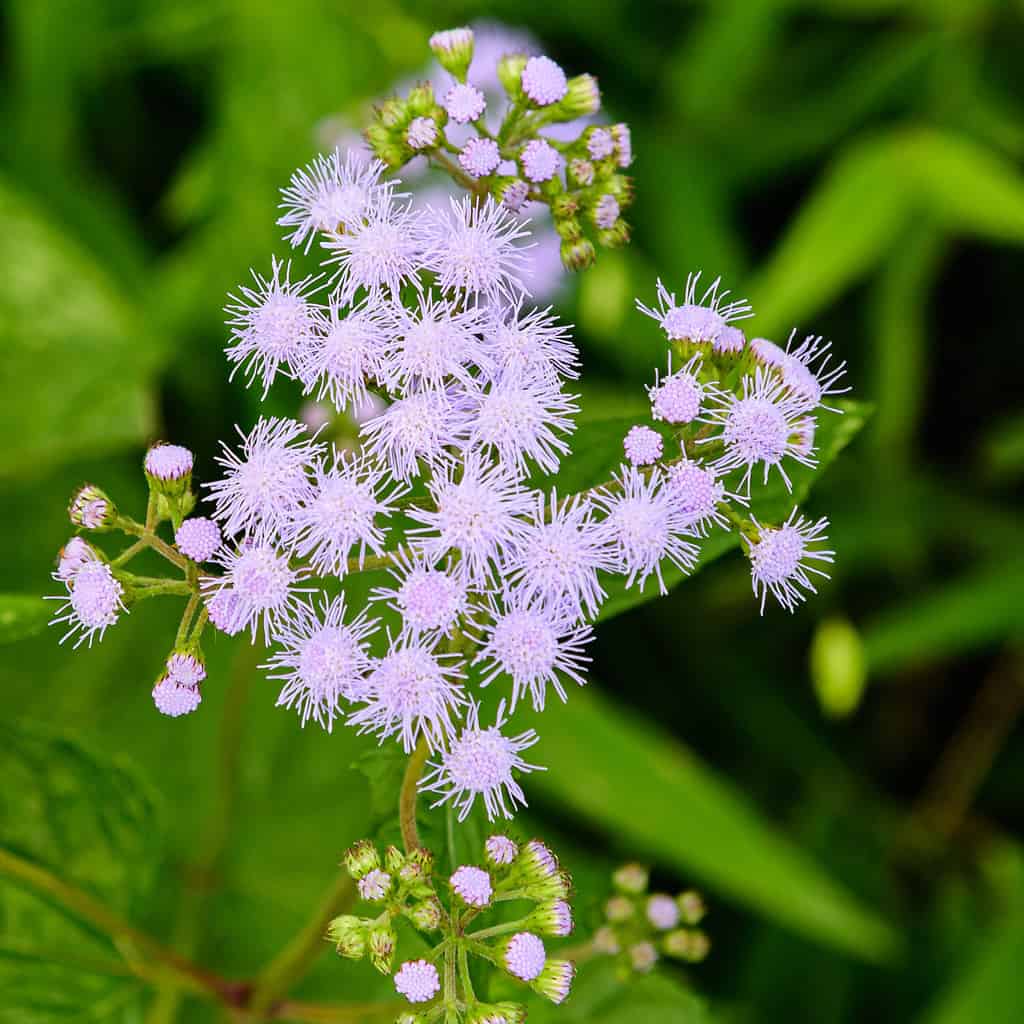
With unique blooms resembling a puffball, the blue mistflower is a cherished fall-blooming flower in Virginia.
©Bill Bass Photography/Shutterstock.com
The blue mistflower is another perennial plant with small, puff-like, vivid blue flowers gathered in horizontal bunches from midsummer to the end of fall. These flowers look very similar to ageratum blooms and are attached to darker, purplish stems. In bloom, blue mistflowers are a hotspot for many pollinators, such as bees and butterflies.
This flower is native to the central and southeastern regions of the United States. A late-season hero, blue mistflower brings a burst of color to gardens when most other flora begin to wither. Be cautious, though, as this wildflower spreads rapidly. So, if not properly controlled, it could potentially become a nuisance to the other plants in your garden space.
For best results, plant blue mistflower in an area with damp, nutrient-dense, and well-draining soil under full sun to partial shade conditions. Planting the seeds in the late fall is ideal. This allows them to undergo cold stratification throughout the winter months.
3. Late Boneset (Eupatorium serotinum)

Not your typical garden flower, late boneset is a gorgeous and exciting wildflower that thrives in Virginia gardens.
©gala adi/Shutterstock.com
A wildflower native to Virginia, late boneset is a perennial plant characterized by its vertical stems covered in opposing, lance-shaped leaves that can grow up to 7 inches long, featuring jagged edges. As fall approaches, you’ll witness large clusters of flowers filled with 12-15 tiny, petal-less, creamy-white blooms. Generally, you can expect the blooms to appear between August and October. These flowers remain in bloom for approximately a month. Additionally, they are a magnet for pollinators, including bees, butterflies, skippers, and even beetles.
This plant stands out in gardens, especially towards the end of the season when other plant varieties become scarce, gracing spaces with its late-season flowers.
To ensure you give this plant the best chance of growing, place it in an area with a mix of sun and partial shade and in an area with fertile, organic-rich, damp, yet well-draining soil. Additionally, we recommend planting late boneset seeds during the late summer to early fall season for the best results.
4. Great Blue Lobelia (Lobelia siphilitica)

The flowers of the great blue lobelia are usually blue or violet but sometimes have lighter shades.
©iStock.com/skymoon13
Native to North America, the great blue lobelia is an upright perennial that blesses your garden with elongated clusters of blue flowers. These flowers stand tall above the plant’s narrow, sharply edged leaves and bloom from late summer until the middle of fall. Depending on your location in Virginia, you can expect great blue lobelia to bloom between late July and late September.
This plant requires minimal maintenance and is generally pest- and disease-resistant, making it a low-maintenance choice. Though the great blue lobelia has a relatively brief lifespan, it has the potential to propagate naturally in the right environmental conditions without the risk of becoming a nuisance.
This bunch-growing variety flourishes in fertile, compost-rich, moderately wet soils and enjoys areas with full to partial sun exposure. To plant, sow the seeds during the late fall.
5. Pink Turtlehead (Chelone lyonii)
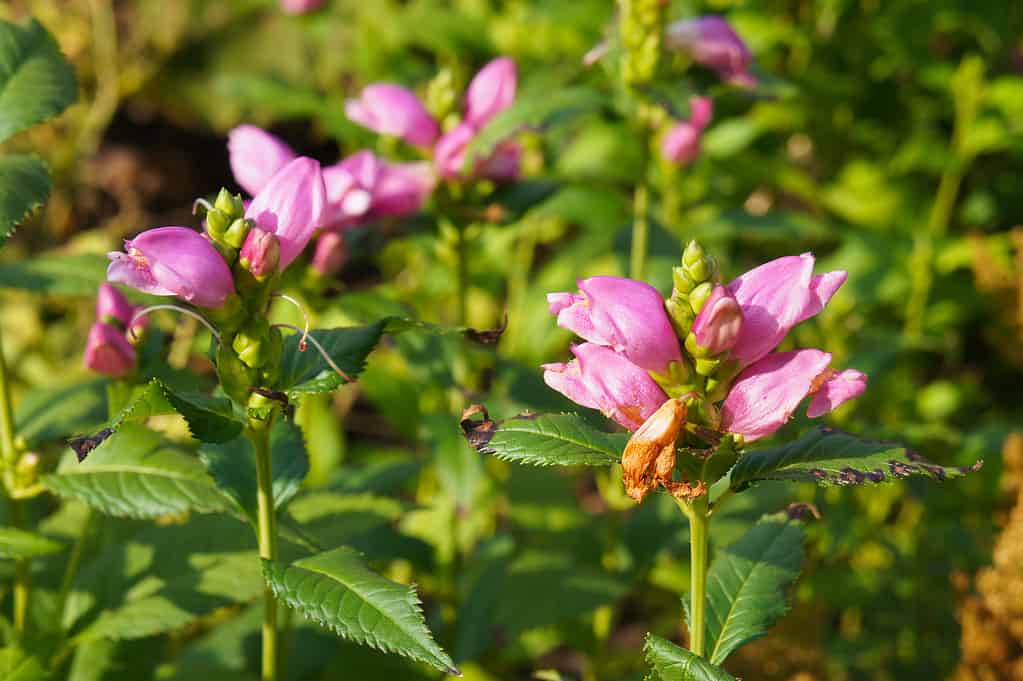
One of my personal favorite flowers in Virginia is the pink turtlehead. Any gardener looking to invite some color into their fall garden will love this entry!
©skymoon13/iStock via Getty Images
Pink turtlehead is the perfect fall blooming flower for adding a splash of color to your Virginia garden. You can expect this bunch-growing perennial to bloom from the end of summer well into autumn. Pink turtlehead is undoubtedly a unique flower that is graced dual-lipped, pink, and red blooms. The flowers, resembling the appearance of a turtle’s head peeking out from its shell, inspire its popular name, “turtlehead.”
Not only is this plant a treat for the eyes, but it’s also low on maintenance and resilient to diseases and pests, establishing itself as a top-notch option for gardens in Virginia.
This plant thrives in nourished, moderately damp to wet soils and can flourish under full sun to partial shade, although it prefers a bit of shade. It’s best to plant turtlehead during spring or summer, allowing it sufficient time to settle.
6. Hairy Golden Aster (Heterotheca villosa)
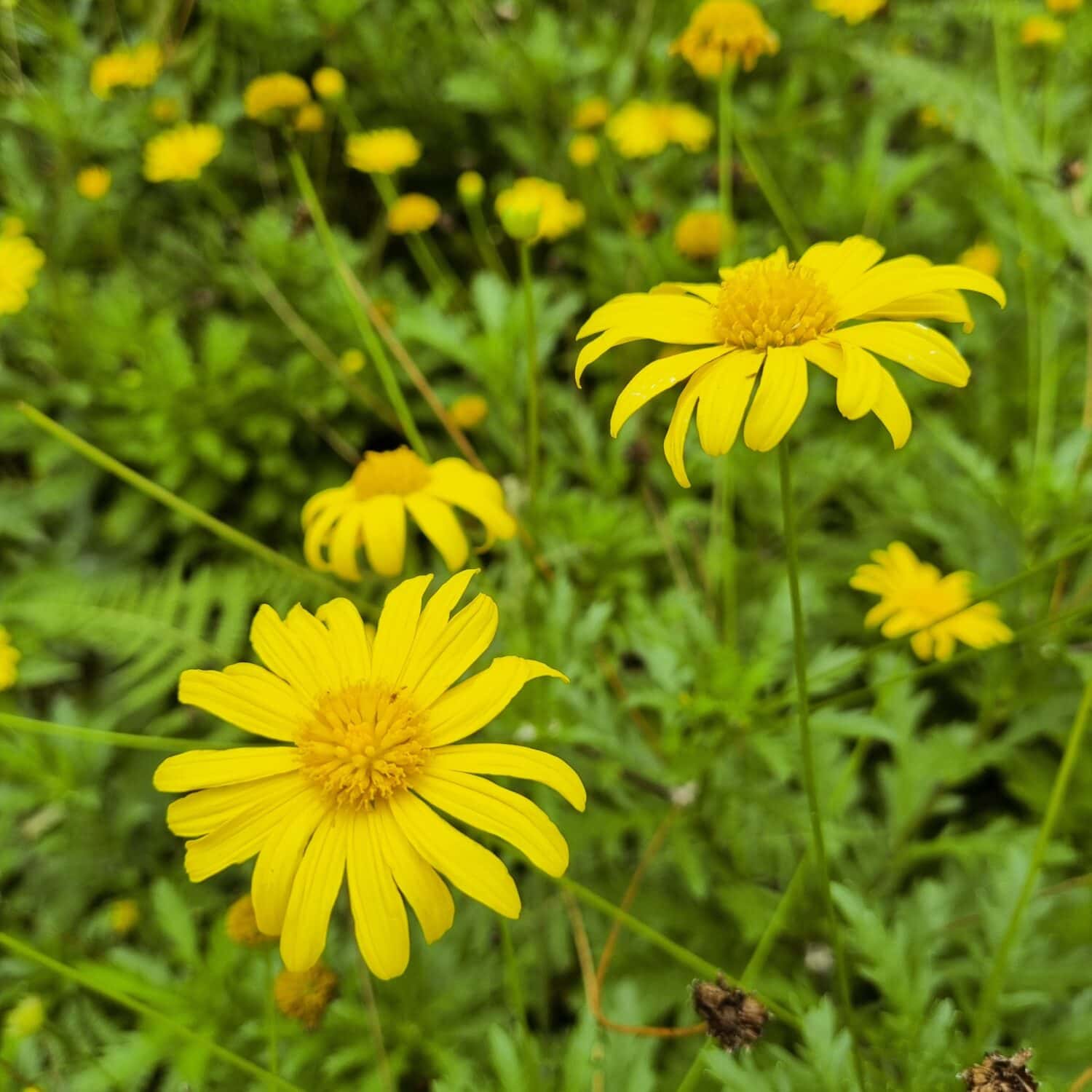
The hairy golden aster is a textbook-perfect flower with a symmetrical bloom and bright yellow color!
©Imeyfdz/Shutterstock.com
A sturdy perennial that revels in the sunlight, the hairy golden aster is characterized by its erect, bushy shape and small yellow flowers. Each stem of this plant is topped with groups of beautiful yellow daisies about an inch in diameter. The flowering period for this flower in Virginia lasts a substantial 3 to 4 months, from late spring to the cooler fall months. Each flower boasts 10 to 20 radiant petals.
Additionally, their golden sprays emit a delightful spicy-sage scent, drawing butterflies while generally being avoided by deer.
To ensure healthy growth, plant in an area receiving abundant sunlight, ideally in sandy, dry, and well-draining soils. You can plant the seeds either immediately after they ripen or wait until the spring season to do so.
7. Sweet Goldenrod (Solidago odora)

One fall-blooming flower that is sure to catch your eye in Virginia is sweet goldenrod.
©Greg Kushmerek/Shutterstock.com
An elegant addition to any Virginia garden is the sweet goldenrod, which grows gradually, forming bunches as a perennial. This plant showcases erect stems adorned with spear-shaped, dark green foliage that spans up to 4 inches in length, releasing a fragrance similar to anise or licorice when crushed. From the middle of summer to fall, it presents thick clusters of yellow blossoms that align one side of the slightly curving branches.
Not only adding colors to gardens in the latter part of the season, the sweet goldenrod also beckons a variety of fauna, including birds, bees, butterflies, and hummingbirds.
To ensure its vibrant growth, place it in areas with ample sunlight or mild shade, where the soil conditions range from dry to moderately moist but well-draining. This goldenrod variant can be planted in spring or fall to witness its full blossoming glory.
8. Virginia Meadow Beauty (Rhexia virginica)
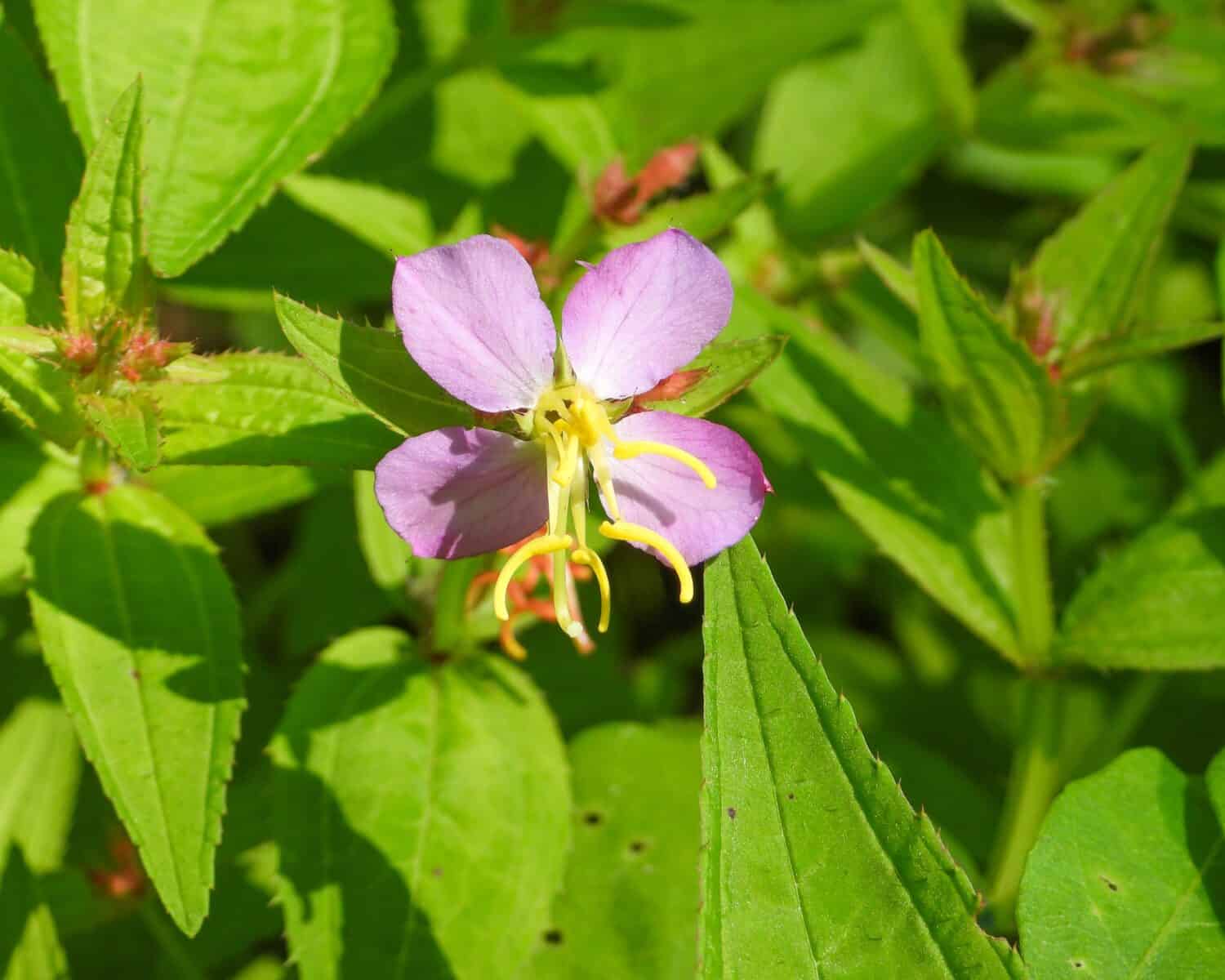
The Virginia meadow beauty is a fall garden favorite among many gardening enthusiasts in the state.
©Brian Woolman/Shutterstock.com
As the name might suggest, the Virginia meadow beauty is a beautiful, captivating flower. The flowers of this plant span about an inch and contain four purple petals complemented by eight vivid yellow stamens. These flowers, which appear in loose, almost terminal clusters from the latter part of spring to the onset of fall, greet the morning with open blooms, typically shedding their petals by the early afternoon.
A native of Virginia, this meadow beauty naturally finds its home in moist environments like wetlands, bogs, damp meadows, and open sandy areas. Its lively character makes it a prime choice for bog gardens or wet meadows.
If you want to grow this flower in a home garden, we recommend planting in sandy, acidic, and wet soil, preferably under partial shade. The best planting times are during the spring and fall seasons when the soil is manageable and there’s no risk of frost.
9. Obedient Plant (Physostegia virginiana)
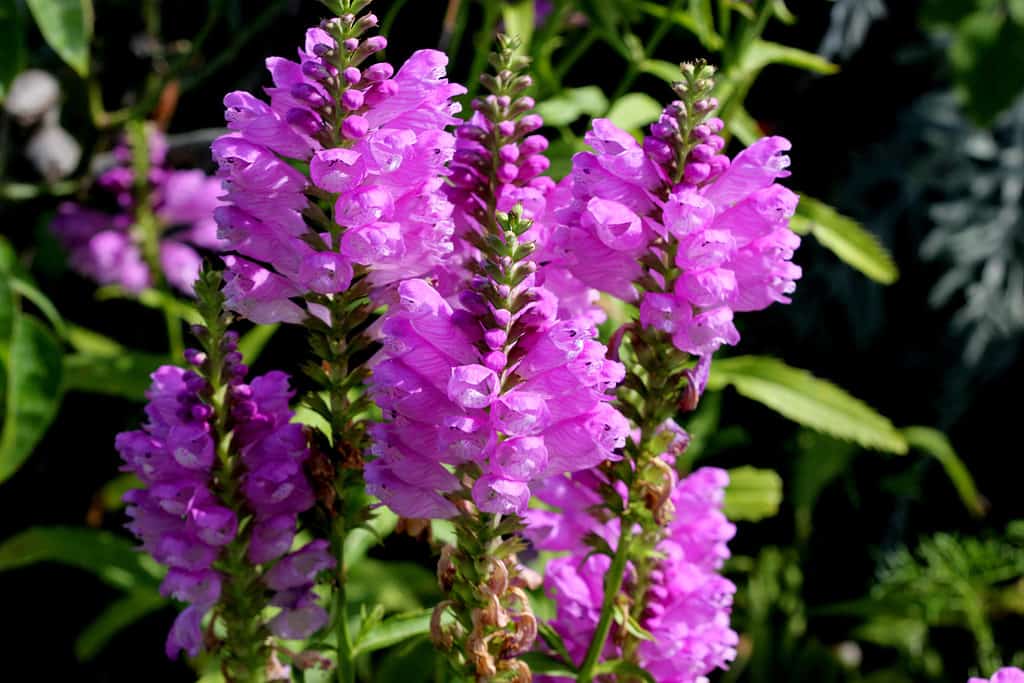
A unique feature of the obedient plant is that its blooms will remain in any position you push them to for quite some time. This is why the plant is called “obedient.”
©Gurcharan Singh/Shutterstock.com
The obedient plant is an erect, herbaceous perennial flower known for its thick clusters of pink to light purple funnel-shaped blooms that grace gardens from the mid-summer through to fall. Unfurling gradually from the lower to the upper parts of each stem, these fall-blooming flowers are a hub of activity for bees, hummingbirds, and butterflies, who frequently visit them. These flowers emerge on rigid, squared stems adorned with slender, lanceolate leaves.
A peculiar trait of this plant is its ability to retain a new position for some time if its flowers are gently bent, a feature that led to its unique name, the obedient plant. This characteristic, along with its vivid blossoms, makes it a more suitable option for untamed gardens, prairies, and meadows.
For best results, select fertile, damp, yet well-draining patches of soil that receive abundant sunlight. Obedient plant seeds should be sown directly into the soil as the late fall approaches.
10. Toad Lily (Tricyrtis formosana)
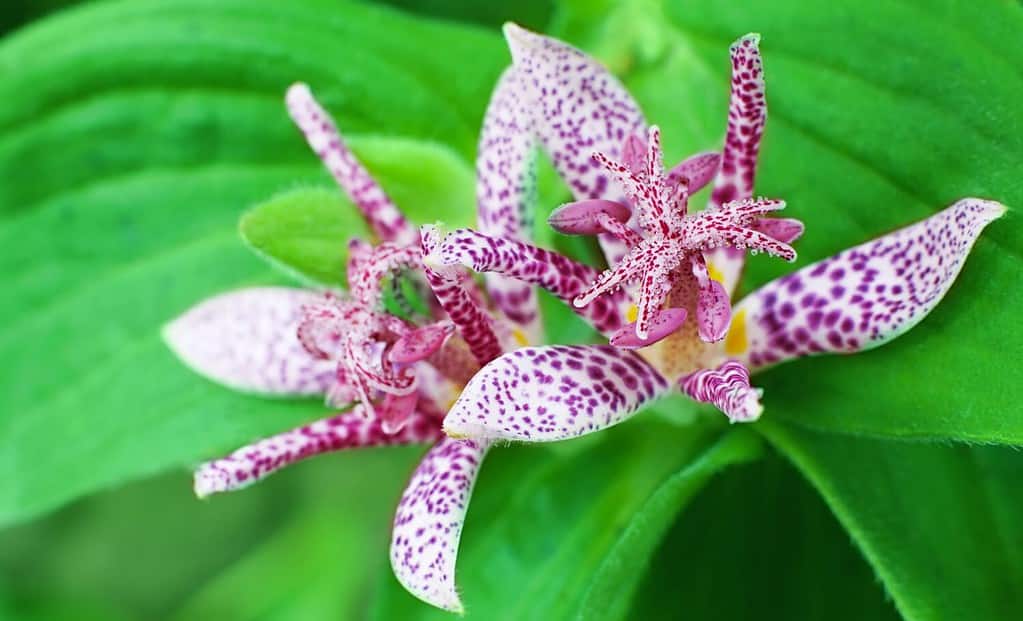
Want to add something exotic to your garden? The toad lily is an interesting flower for fall gardens in Virginia.
©Lancan/Shutterstock.com
A unique and absolutely charming flower with a touch of exotic appeal is the toad lily. This perennial adores the shade, presenting tiny orchid-like flowers that are about an inch in length. These flowers captivate onlookers with striking white tepals adorned heavily with purple specks and a yellow center, offering a visual feast in relaxed clusters atop upright stems from late summer to fall.
Its remarkable bloom display, hearty nature, resistance to winter chills, and immunity to diseases earned it high praise in the 2001 Chicago Botanic Plant Evaluation study, cementing its status as a top performer in any garden.
Ideal for places with partial to full shade, the toad lily flourishes in soil that is rich in organic matter, maintaining a slight acidity and even moisture with good drainage. To witness its splendid fall bloom, make sure to plant the toad lilies during the spring season.
11. Meadow Saffron (Colchicum byzantinum)
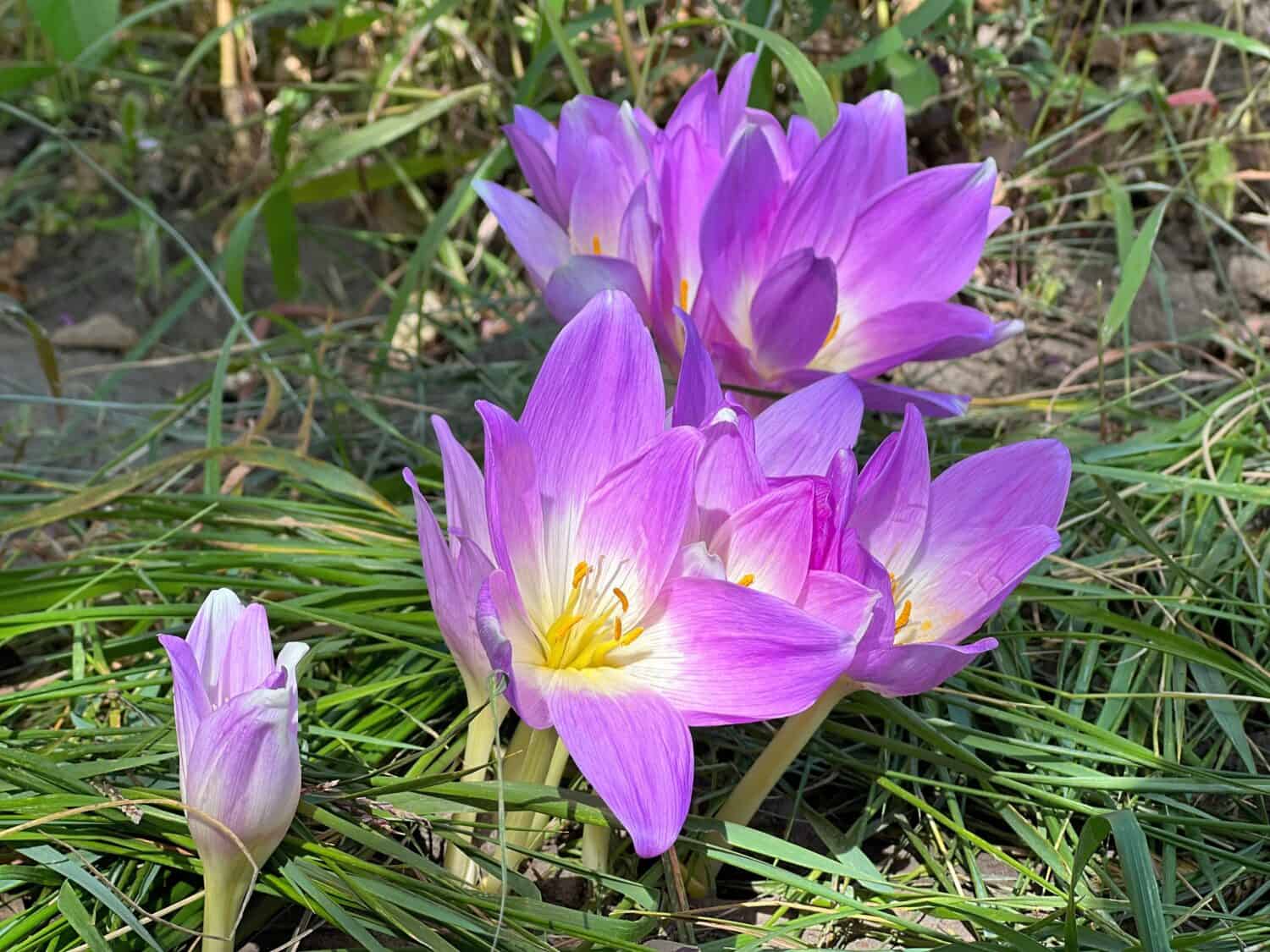
This low-lying fall flower thrives in Virginia and is an excellent addition to any garden.
©lialina/Shutterstock.com
This prize-winning early autumn bloomer, known as meadow saffron, showcases up to 20 small, trumpet-like, soft lilac blooms, each extending 4-6 inches in length. These flowers, distinguished by a central white stripe, emerge on white stems even before the foliage appears, offering a truly special spectacle in the autumn garden.
It’s vital to note that every part of this plant is extremely poisonous when consumed. It’s advised to wear gloves while handling and to cleanse your hands thoroughly afterward. The plant is hazardous to a variety of beings, including humans, dogs, cats, and horses.
Growing this plant is a breeze; it flourishes in soils with moderate moisture and good drainage, whether in full sun or partial shade. To enjoy its enchanting blossom within the same year, place the corms 3 inches deep and space them 6 inches apart, ideally in the latter part of summer.
12. Russian Sage (Perovskia atriplicifolia)
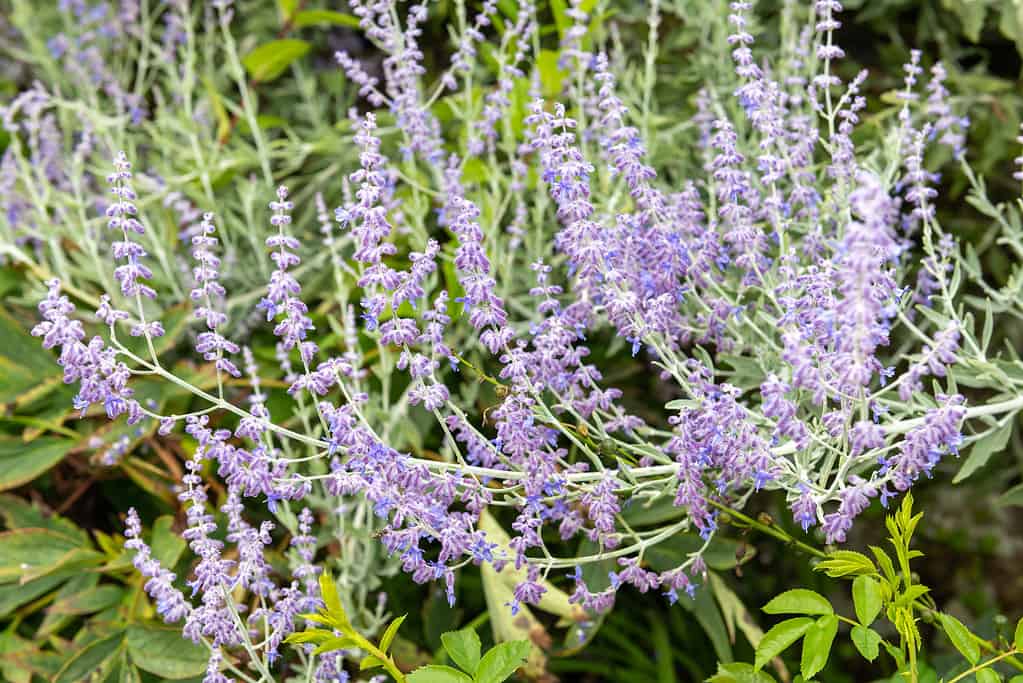
The blue flowers of Russian sage shine in late summer and autumn.
©Tom Meaker/ via Getty Images
The Russian sage is a hardy, woody perennial with a bushy appearance, which features tall clusters of tiny lavender-blue flowers. These blooms perch atop slender white stems surrounded by aromatic gray-green foliage that is finely segmented. From the heart of summer through fall, this resilient plant, seemingly delicate, stands strong against various conditions like drought, high temperatures, pests, and unfertile soil.
Not only is it an attractive addition to gardens due to its prolonged blooming period, but it also contributes to the winter scenery with its aesthetically pleasing stem structures. It is an exceptional choice for xeriscaping, a landscaping method that utilizes plants that require little water.
This plant thrives in sunny spots with soil conditions ranging from dry to moderately moist, boasting well-drained characteristics. It possesses a remarkable tolerance to drought and salt. Planting Russian sage is optimal in late spring, a time when the soil has warmed, promising a quick growth spurt for the newly planted flora.
Summary of Most Colorful Fall-Blooming Flowers In Virginia
| Number | Flower | Blooming Period |
|---|---|---|
| 1 | Chicory | Late spring to fall |
| 2 | Blue Mistflower | Mid-summer to late fall |
| 3 | Late Boneset | Late summer through fall |
| 4 | Great Blue Lobelia | Late summer to mid-fall |
| 5 | Pink Turtlehead | Late summer to fall |
| 6 | Hairy Golden Aster | Late spring to fall |
| 7 | Sweet Goldenrod | Late summer to fall |
| 8 | Virginia Meadow Beauty | Mid-summer to early fall |
| 9 | Obedient Plant | Late summer to fall |
| 10 | Toad Lily | Late summer to fall |
| 11 | Meadow Saffron | Fall to early winter |
| 12 | Russian Sage | Mid-summer to fall |
The photo featured at the top of this post is © lialina/Shutterstock.com
Thank you for reading! Have some feedback for us? Contact the AZ Animals editorial team.







